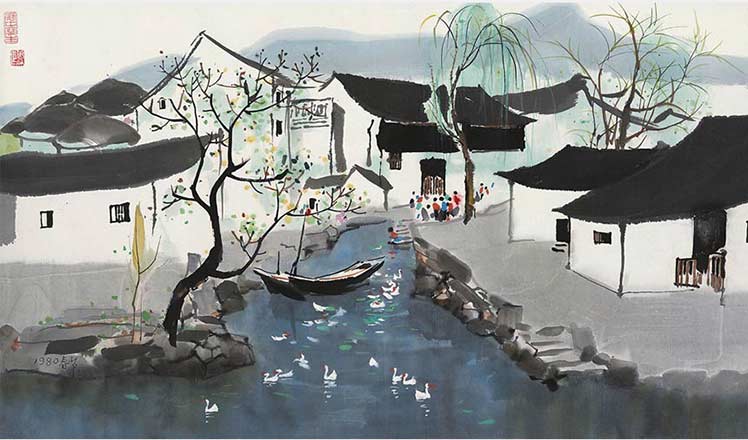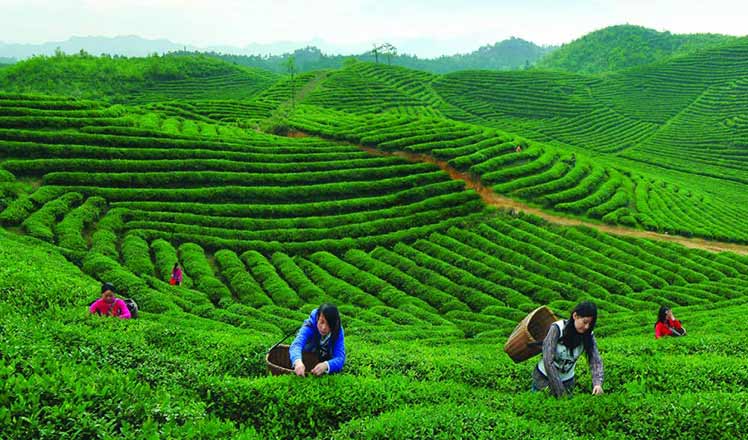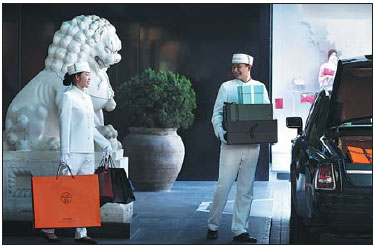Learning life lessons by reading tea leaves
Updated: 2016-04-16 07:40
By Ye Jun(China Daily)
|
||||||||
Some of the best things in life don't happen until you grow old enough to recognize them. I can say that about tea.
I didn't start to drink tea until I was 35. What happened before that? Well, it simply didn't seem necessary.
The first time I felt a genuine urge to drink tea was in 2003, when I stayed briefly in the United Kingdom. After a time of consuming local food, I started to really like strong black tea. Although it was too strong to my tongue, I felt it was a necessity because it was comforting to my body.
I took packs of green teas with me as gifts but was disappointed to find my British friends preferred much stronger black teas from Sri Lanka. Later I learned that although people know China for its teas, it ranks only third among the world's black tea exporters, after Sri Lanka and Kenya.
After I came back to China and started to cover food stories, I met friends in the tea-drinking circle and learned more. Although the majority of the rest of the world drinks black tea, which the Chinese call "red tea", China produces and drinks mostly green teas.
Another major difference is that Chinese people prefer to drink what are called "original leaf" teas, in which the leaves are whole, compared to the finely chopped black tea that is prevalent in the world market.
Chinese teas are also probably the world's most expensive. While other parts of the world spend a few dollars on a pound of finely chopped black tea, for 200-400 yuan ($31-$62) one can only get an average tea in the Chinese market. Some mingqian cha, green teas made with the first spring sprouts before qingming, the tomb-sweeping festival that fell on April 4 this year, cost more than 1,000 yuan per 500 grams.
I feel lucky to be Chinese because of the great variety of teas available in the country. It is estimated that there are more than 2,000 teas in China if you divide them geographically, including more than 600 locally famous brews. A more simple way to categorize is by color and extent of fermentation. That comes down to six main categories -green, white, yellow, dark-greenish (oolong), red and black teas.
It is said that the Chinese started to drink tea 5,000 years ago. A written record about Shennong, the legendary Chinese ancestor who started agriculture, tasted hundreds of grasses to find the proper grains, but was made ill from toxins many times a day. Luckily he found tea, which flushed out the toxins. There are many enticing Chinese stories about tea like this one that draw people like me to learn more about the beverage.
Tasting teas can be compared to our lives. They can be plain and predictable but sometimes they are full of pleasant surprises. Occasionally they can even seem too good to be true. The best thing is, you know there's always more to explore.
The author is a senior lifestyle editor with China Daily.
|
The Peninsula Hotels in Hong Kong, Beijing and Shanghai (left, from top to bottom) will present a celebration of legendary Artisans in June.Photos Provided To China Daily |

(China Daily 04/16/2016 page10)

 Top 10 Chinese brands that grow the fastest
Top 10 Chinese brands that grow the fastest
 Best Chinese paintings that reveal the beauty of spring
Best Chinese paintings that reveal the beauty of spring
 Millions visit charming forested area in East China
Millions visit charming forested area in East China
 PLA navy soldiers on patrol on Xisha Islands
PLA navy soldiers on patrol on Xisha Islands
 8 good books from London Book Fair you can't miss
8 good books from London Book Fair you can't miss
 Kobe Bryant's accomplishments by the numbers
Kobe Bryant's accomplishments by the numbers
 Top 10 Chinese cities with biggest surge in home prices
Top 10 Chinese cities with biggest surge in home prices
 Beijing Hutongs revived in watercolors
Beijing Hutongs revived in watercolors
Most Viewed
Editor's Picks

|

|

|

|

|

|
Today's Top News
Duke alumni visit Chinese Embassy
Marriott unlikely to top Anbang offer for Starwood: Observers
Chinese biopharma debuts on Nasdaq
What ends Jeb Bush's White House hopes
Investigation for Nicolas's campaign
Will US-ASEAN meeting be good for region?
Accentuate the positive in Sino-US relations
Dangerous games on peninsula will have no winner
US Weekly

|

|








